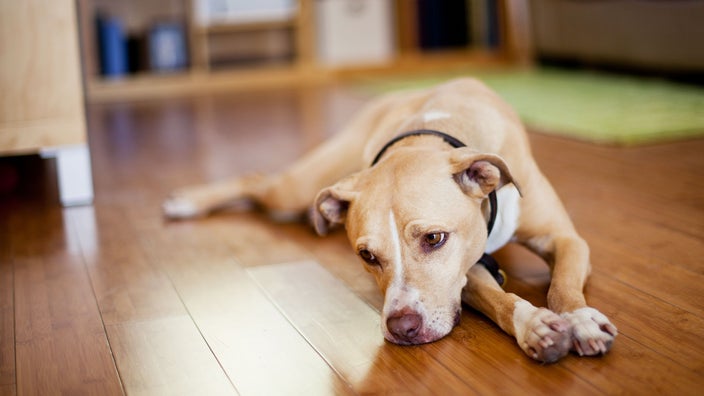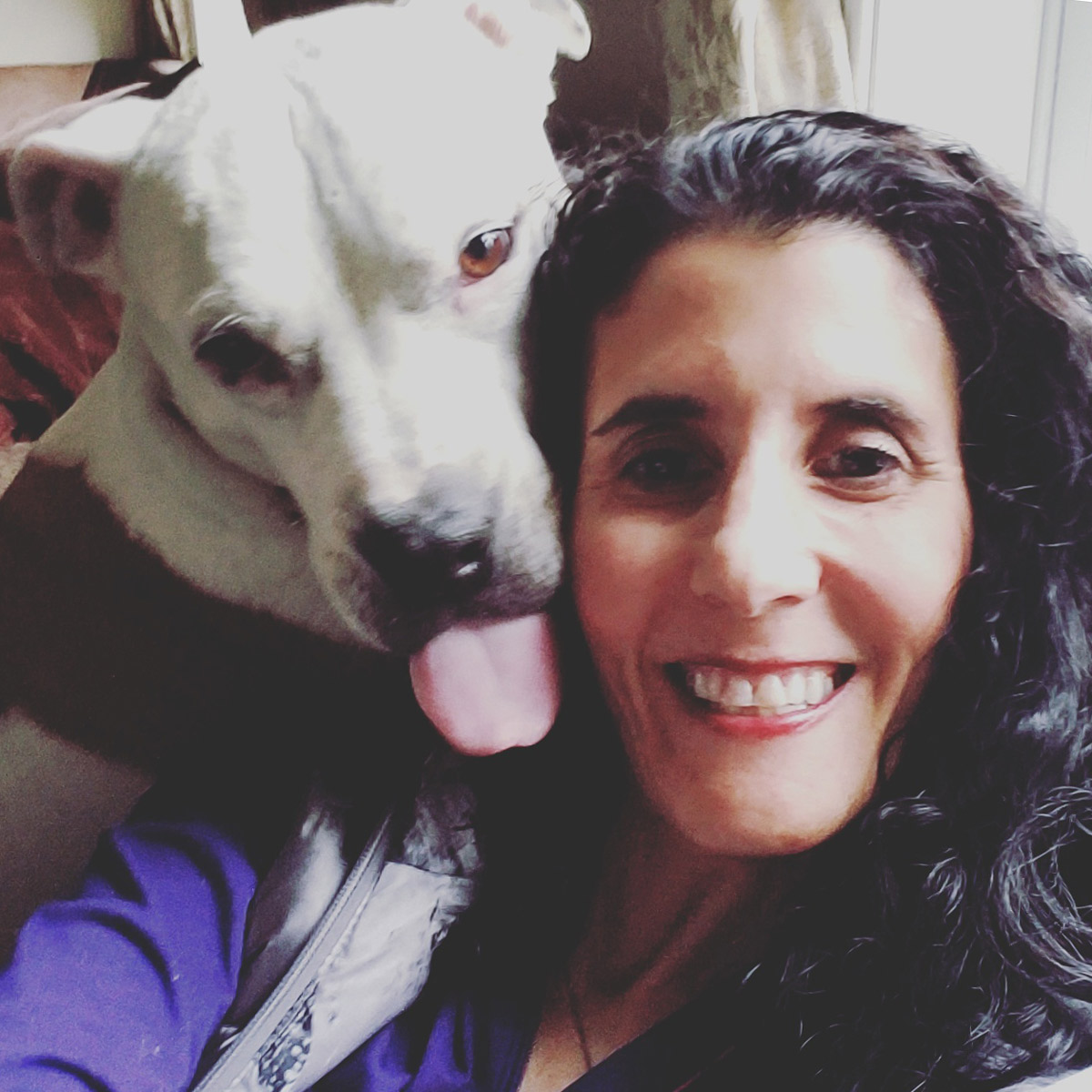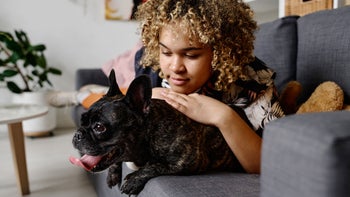
Is Your Dog Depressed? Here Are the Common Signs and How You Can Help
Key takeaways:
Depression in dogs is most often caused by big changes, such as the loss of a significant human or an environmental change like a move.
Depressed dogs may show symptoms such as a lack of interest in activities, loss of appetite, increased irritability, and unusually clingy or needy behavior.
You can help improve your dog’s mood by giving them plenty of exercise, playtime, and mental stimulation.
Table of contents

If your pup seems to have the blues, it could be depression. Many dogs get depressed, just like people do. Often, they become withdrawn, stop eating, and lose interest in things they once enjoyed. Thankfully, there are things you can do to help a depressed dog.
Below, we’ll look at common symptoms, causes, and treatments for canine depression.
Can dogs get depressed?
Yes, dogs can have depression. Most of us know someone who has experienced major depression, which can cause a loss of interest in favorite activities and struggle to cope with daily life. But dogs get depressed as well. Some research suggests that nearly 75% of dogs may show symptoms of anxiety or depression at some point.
Save on the top 10 pet medications
Save big on common pet medications like Fluoxetine and Levetiracetam at your local pharmacy.

GoodRx is NOT insurance. GoodRx Health information and resources are reviewed by our editorial staff with medical and healthcare policy and pricing experience. See our editorial policy for more detail. We also provide access to services offered by GoodRx and our partners when we think these services might be useful to our visitors. We may receive compensation when a user decides to leverage these services, but making them available does not influence the medical content our editorial staff provides.
What are symptoms of depression in dogs?
There’s not a lot of research in the area of dog depression symptoms. But from what we know, dogs show symptoms that are similar to those experienced by humans with depression.
The most common signs of depression in dogs include:
Lack of interest in activities they previously enjoyed, such as going for a walk or playing
Destructive behavior, such as chewing things they shouldn’t
Clingy or needy behavior
Withdrawn and distant behavior
Increased irritability
Changes in sleep patterns
What causes depression in dogs?
While there are a variety of triggers for depression, it is frequently caused by a major change in a dog’s life.
Some of the top causes of canine depression include:
Loss of a canine companion
Environmental changes such as moving, rehoming, or the addition of a new baby or pet
Major schedule changes like an owner starting a new work schedule
Lack of physical or mental stimulation
Trauma from an injury, disease, or abuse
Being tied out on a chain
Being socially isolated for long periods
Boredom
Prozac for dogs: Prozac isn’t just an antidepressant for humans. Learn how Prozac (fluoxetine) may help your dog feel better.
When dogs stop eating: There are many reasons your dog may have stopped eating. Read about some common causes, and what you can do about it.
What about anxious dogs? If you’ve got an anxious dog, don’t worry. We’ve got you covered. Here’s how to calm a hyperactive pup.
Does human depression affect dogs?
Dogs have been bred to be empathic and responsive to human moods. For example, one study found that dogs show the same stress levels as their owners. As a result, some dogs may become depressed if their owner shows signs of depression.
What are the best treatments for depression in dogs?
The best treatment for your dog’s depression depends on the cause. If your dog is in pain, their depression symptoms will likely improve once the pain is treated. Similarly, a dog whose depression stems from abuse or isolation will improve once they are socialized and treated with love.
These enrichment activities can also help lift the mood of your depressed pup:
More frequent walks
Food games using kibble-dispensing treats
More social interaction
Activities that involve sensory stimulation, such as listening to music, playing games that require sniffing out hidden treats, and tactile stimulation
More playtime
Rewards for positive behaviors, whether it be playing, eating, or showing interest in activities
Training, which can increase mental stimulation
Read more like this
Explore these related articles, suggested for readers like you.
If your pup’s depression persists, consult your veterinarian or a dog behaviorist to determine if there is another cause of your dog’s symptoms.
Treating dog depression with medication
Depending on your dog’s symptoms and the severity of their depression, your vet may prescribe them antidepressant or anti-anxiety medication. Common medications prescribed for this purpose include:
Fluoxetine (Prozac)
Paroxetine (Paxil)
Clomipramine (Anafranil)
Amitriptyline (Elavil)
Diazepam (Valium)
Alprazolam (Xanax)
Make sure to get a behavioral and physical health assessment and consult with your bet before giving medication to your dog. And do not give them human medication. The dosages are very different for people and dogs, and some human medications are toxic to dogs.
How can you prevent your dog from getting depressed?
You can’t avoid everything that may cause your dog distress. But there are things you can do to take care of their mental health and help prevent depression.
Exercise and mental stimulation are crucial to reducing your dog’s anxiety and stress, for example. Make sure your dog gets plenty of exercise each day, whether it be walks, time in the backyard, or playtime. Another tip: Rather than walking them up and down the same block each day, take them to see and smell new places. Mental stimulation — such as exploring new places, training, or using puzzle feeders — helps prevent boredom and depression.
When you have to leave your dog home alone, leave “busy toys” to keep them distracted. You can also leave a piece of your clothing, such as a sweatshirt, with your pup. An item that has your scent can calm and reassure your dog.
If your dog enjoys being with other dogs, consider taking them to a quality doggy day care when you have to be away from home. Visits to the dog park can be another way to give your pup social time to prevent depression.
The bottom line
Like humans, many dogs experience depression symptoms at some point. Depression is often caused by big changes in a dog’s life, such as losing an owner or a big move. Common signs of dog depression include loss of interest in a favorite activity, lack of appetite, needy behavior, and withdrawal.
If you think that your dog might be depressed, speak to your veterinarian. Your vet can rule out any underlying health issues, refer you to a certified veterinary behaviorist if needed, and help develop an appropriate treatment plan for your dog.
Why trust our experts?



References
American Kennel Club. (2023). Do dogs grieve other dogs?
ASPCApro. (n.d.). Dog enrichment resources. American Society for the Prevention of Cruelty to Animals.
Bergman, L. (2020). Dog training: How to use rewards. Veterinary Partner.
Guide Dogs for the Blind Association. (2022). Guide Dogs encourages enrichment to boost dog mental health.
Johnstone, G. (2023). How to know if your dog is depressed. American Kennel Club.
Lindell, E., et al. (n.d.). Behavioral counseling: Medications. VCA Animal Hospitals.
Ogata, N. (2015). Psychopharmacology. World Small Animal Veterinary Association World Congress Proceedings.
Smith, L. (n.d.). Depression in dogs: Causes and treatment. Brevard Humane Society.
Sundman, A. S., et al. (2019). Long-term stress levels are synchronized in dogs and their owners. Scientific Reports.





























